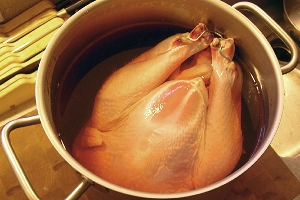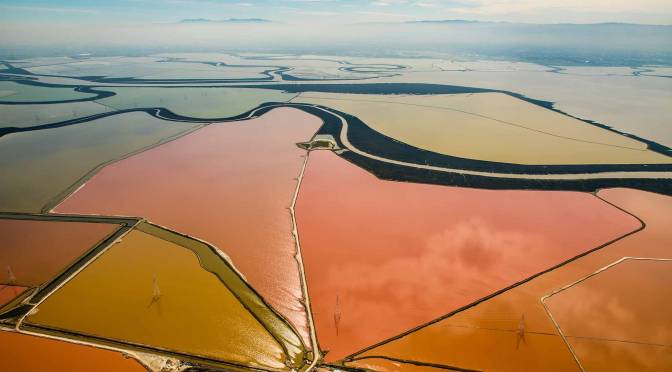 Brining a turkey can help retain more moisture and flavor during the cooking process. Photo by Shawn Hatfield.
Brining a turkey can help retain more moisture and flavor during the cooking process. Photo by Shawn Hatfield.
I grew up in a family of chefs. I think I was three when I cooked my first meal on our olive green gas stove. My brother proudly watched over my process as I burned scrambled eggs. Since then, my abilities have improved. Thanksgiving is one of my favorite holidays because I get to be in the kitchen for a good solid chunk of time. For those who love to cook, Thanksgiving is like the SuperBowl.
For the last couple of years, I have brined the bird. One of the things I hated growing up at Thanksgiving was overcooked turkey. It is dry, flavorless and feels like eating cardboard. I would often forgo turkey because of how dry it was. Meat, especially lean meat like turkey loses about a third of its moisture during cooking. One year, my uncle tried to alleviate this dryness by deep fat frying the turkey. However, he forgot to heat the oil before putting the bird in the cooker which is a fairly big no-no. Needless to say that year, I was very grateful that I was a practicing vegetarian.
Brining has been my preference for the past three years because it is far healthier than deep fat frying and it cuts the cooking time in half. Most importantly is creates a juicy delicious Thanksgiving turkey. Brining entails soaking the meat for a number of hours in a chilled solution of salt and water. I got my recipe off the food network site, specifically from Alton Brown on Good Eats and it includes salt, vegetable stock, brown sugar and various spices.
But how does brining work? The salt solution passes through the permeable meat cells during the soaking process using the method of osmosis. Osmosis is the diffusion of water through a semi-permeable membrane - in this case the meat cells. Through diffusion, the salt and water within the meat cells balance with the salt and water in the surrounding brine which results in a higher concentration of salt and water in the meat. Food chemists disagree about the mechanics of this diffusion and how salt travels across membranes, but at the end of the day, the diffusion results in more water and flavor within the cells of the meat.
